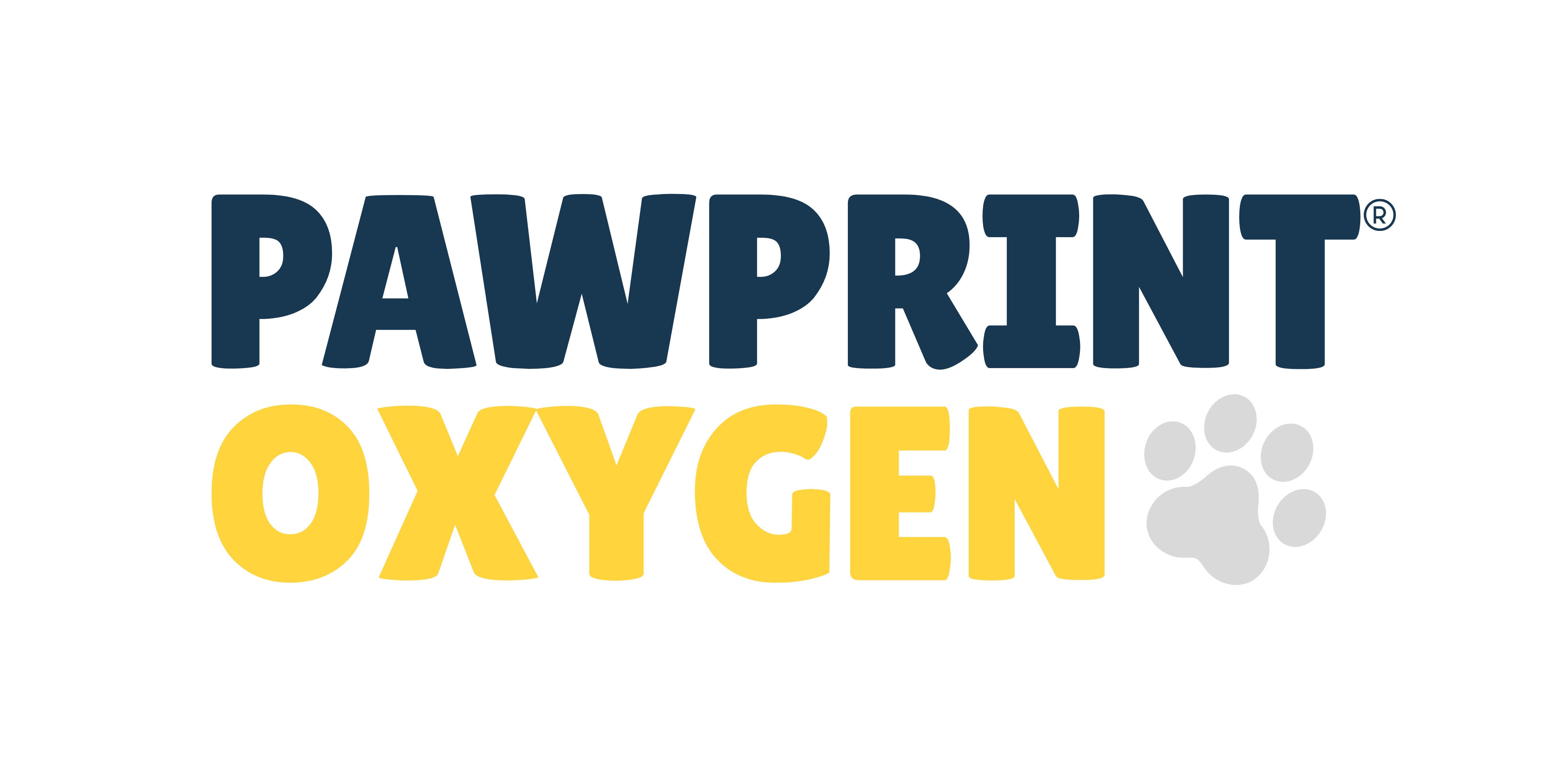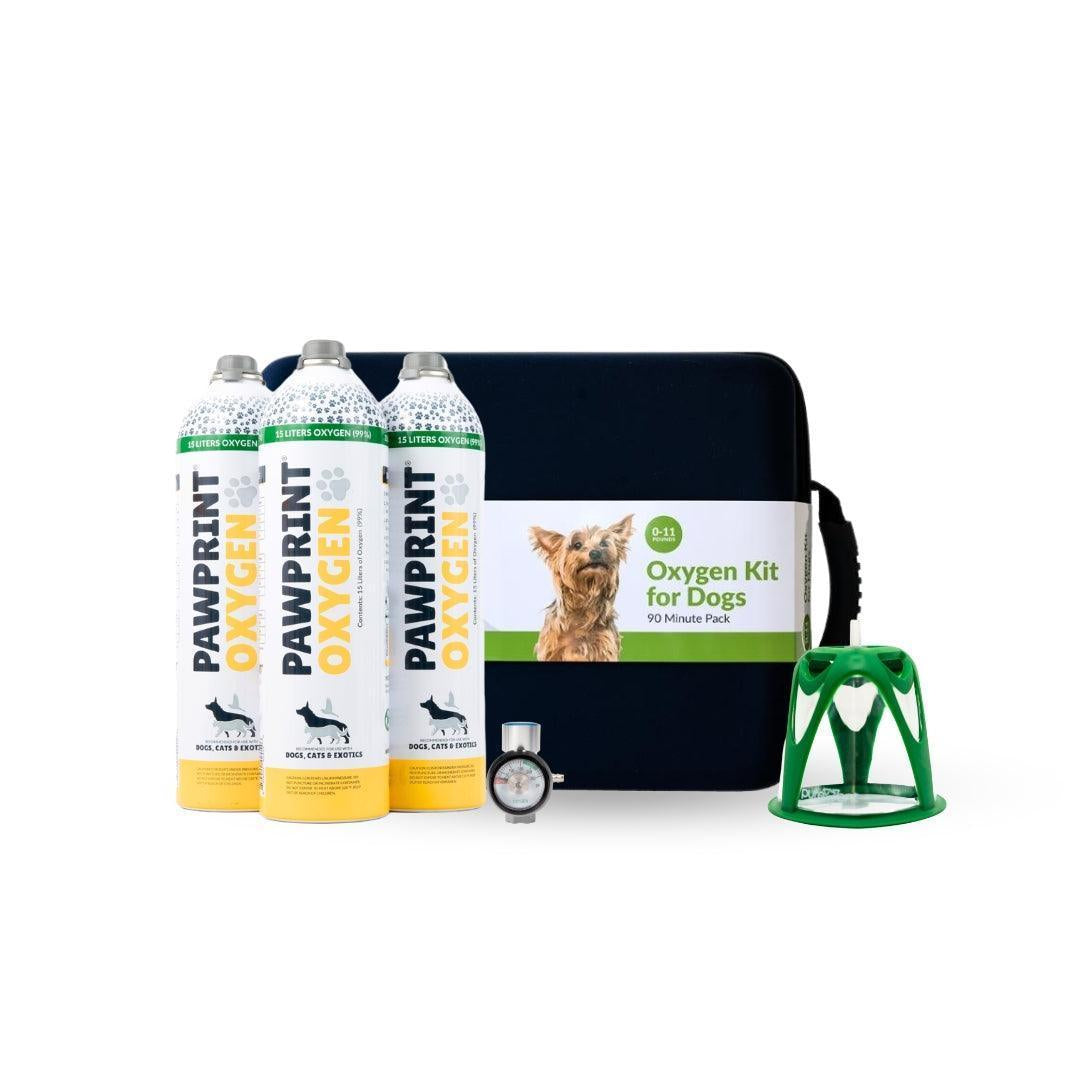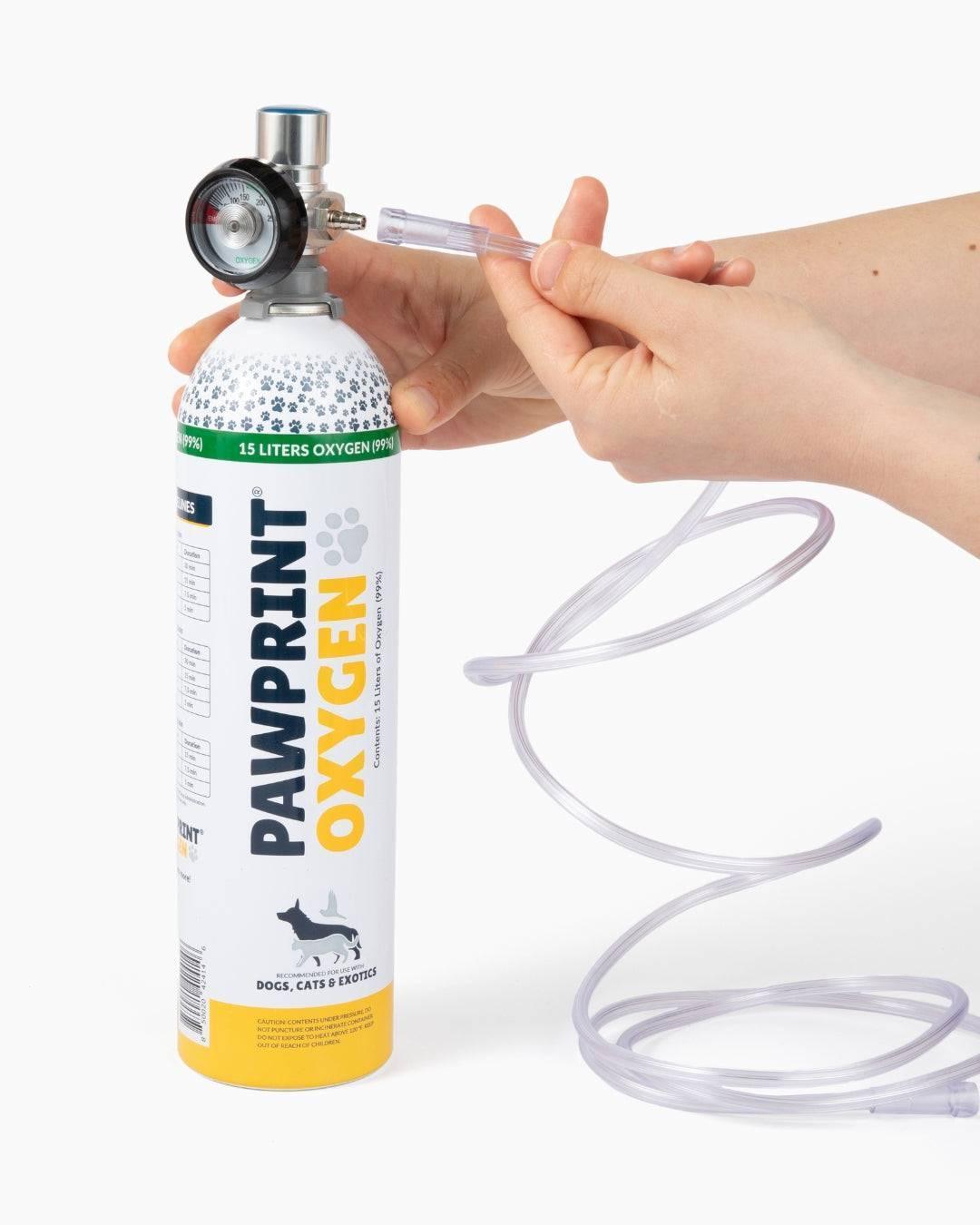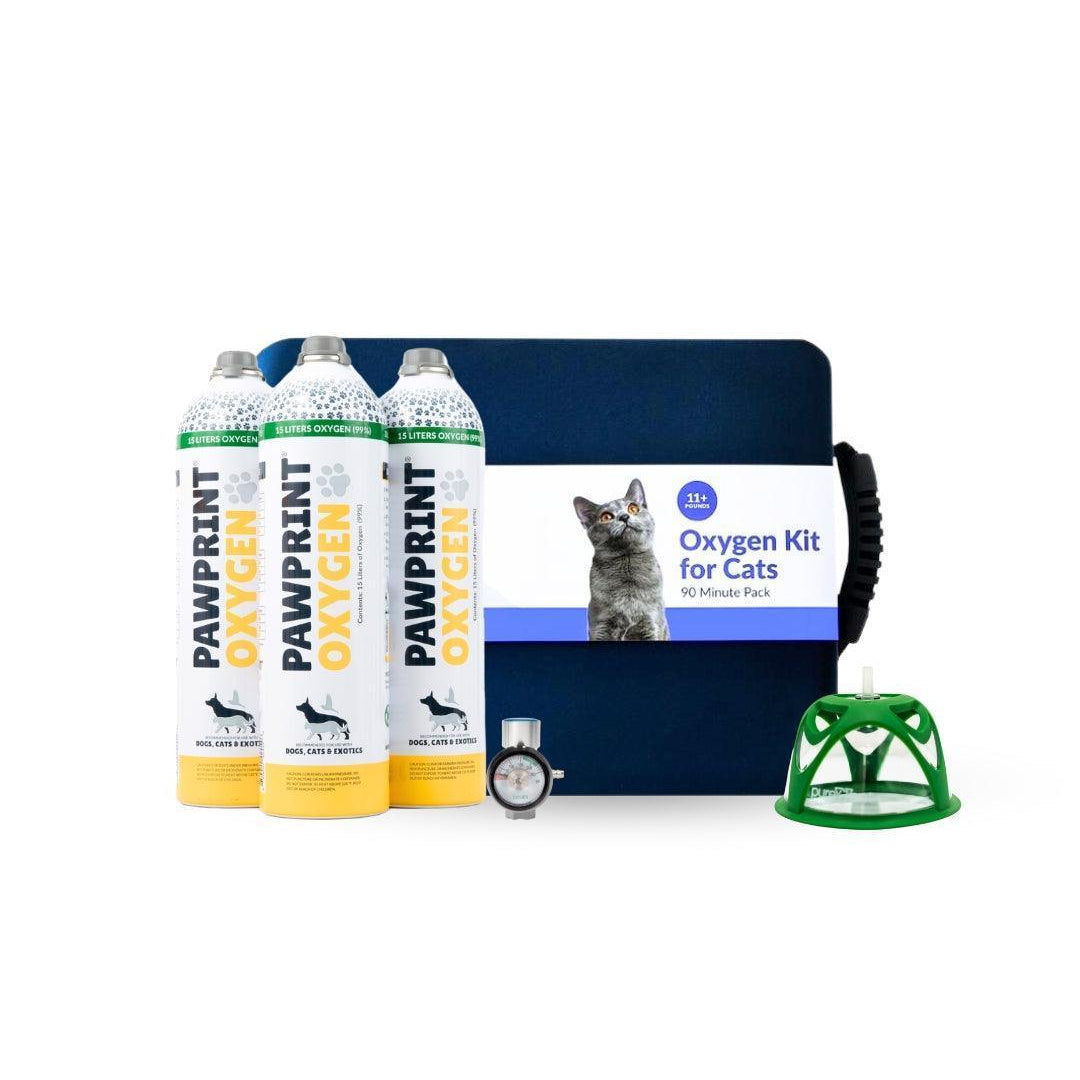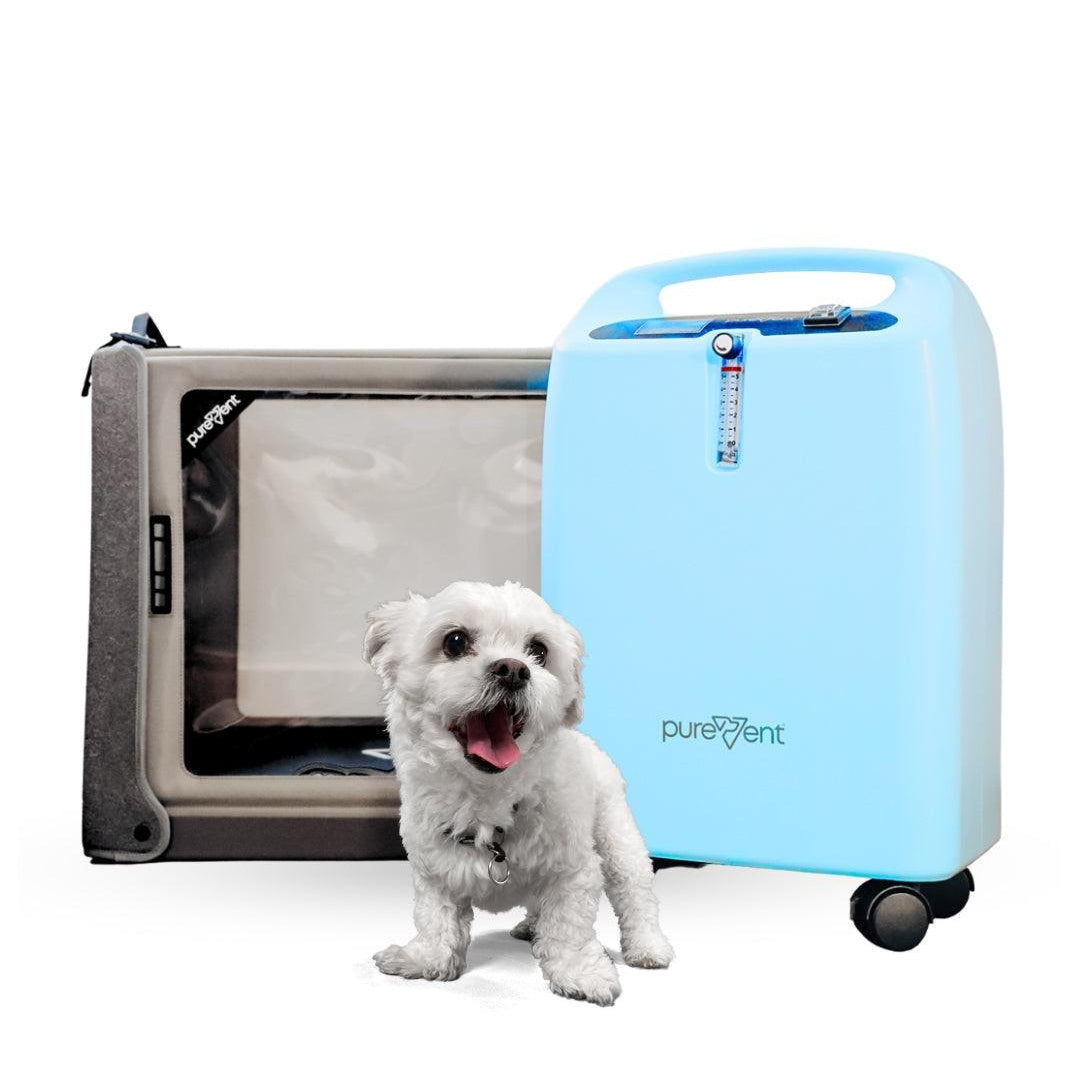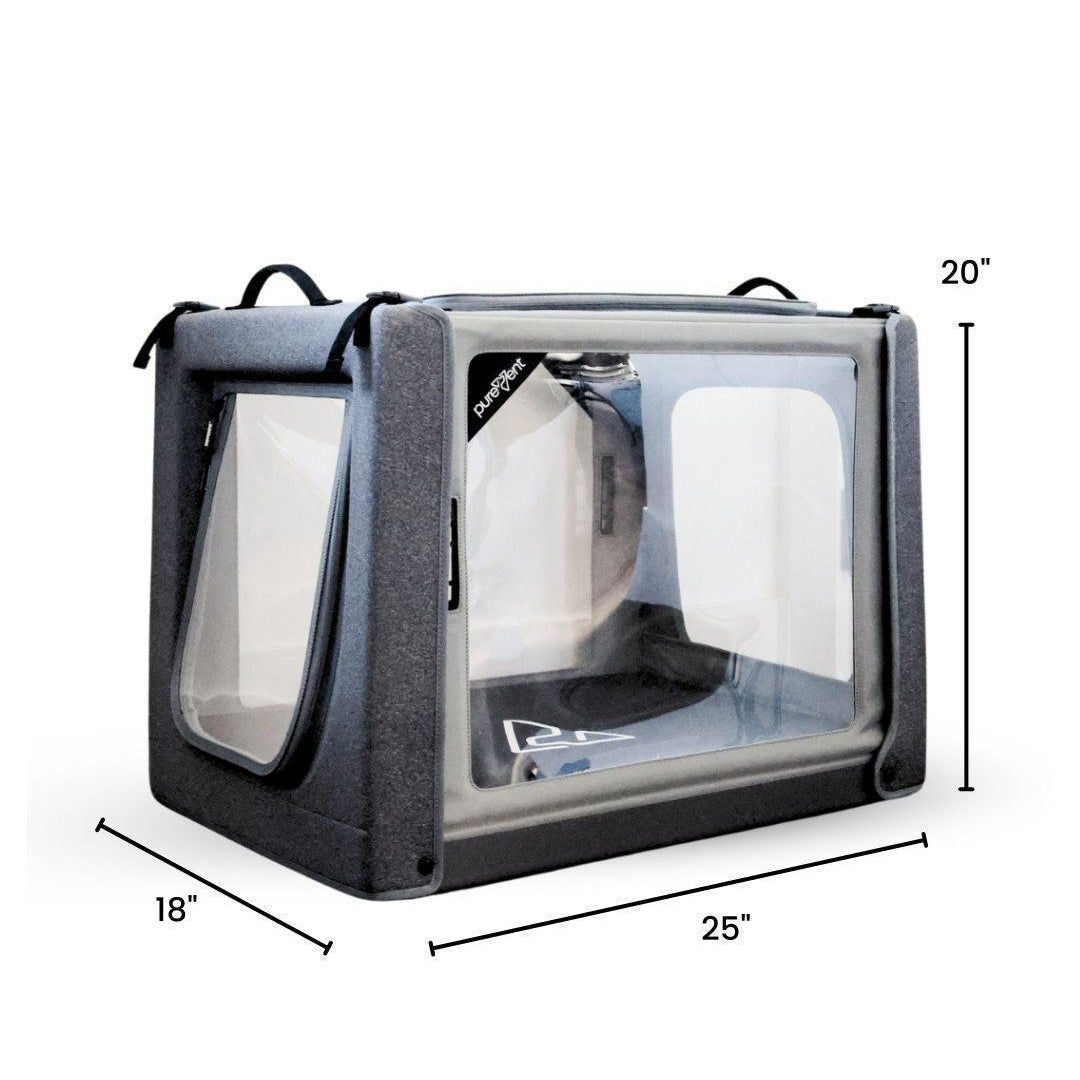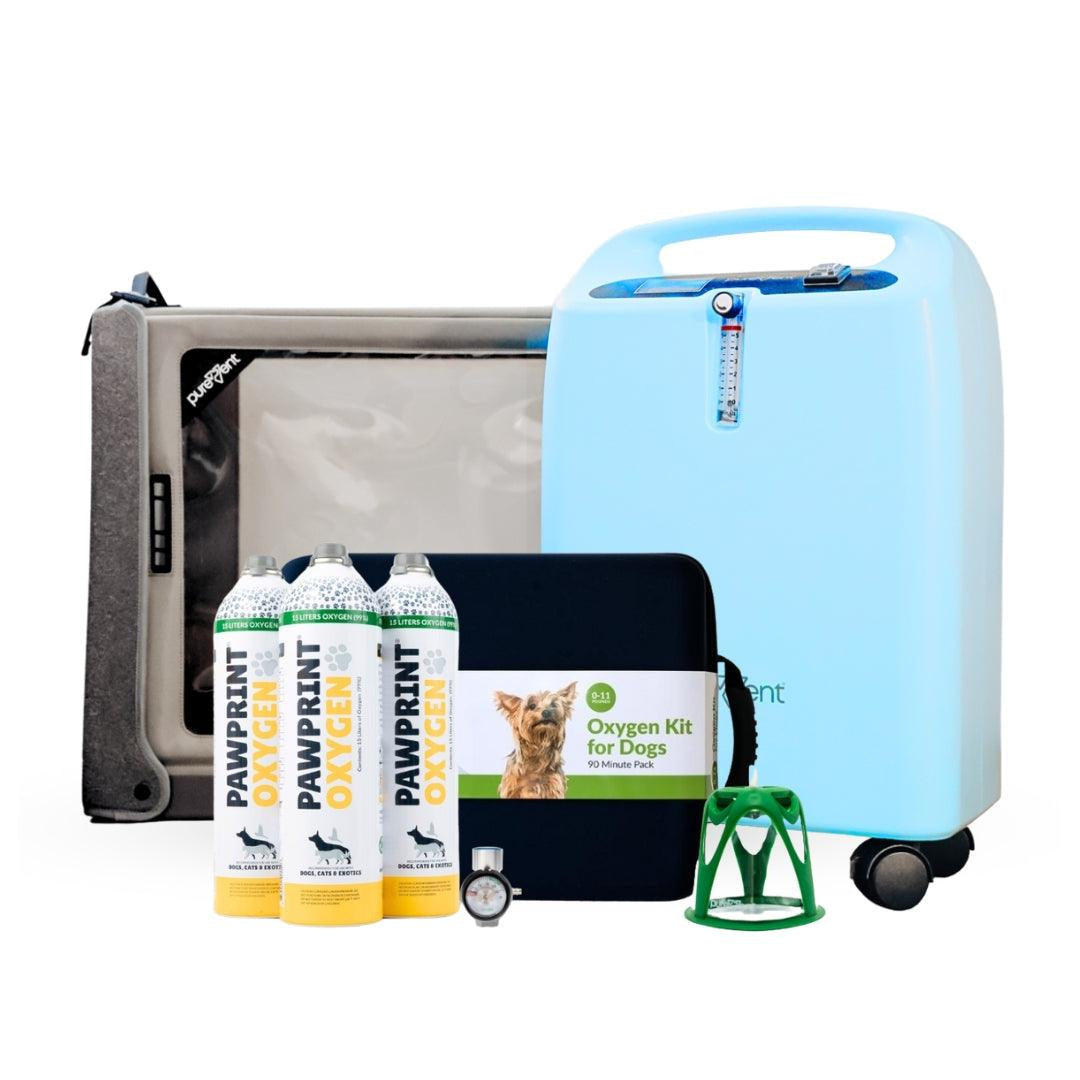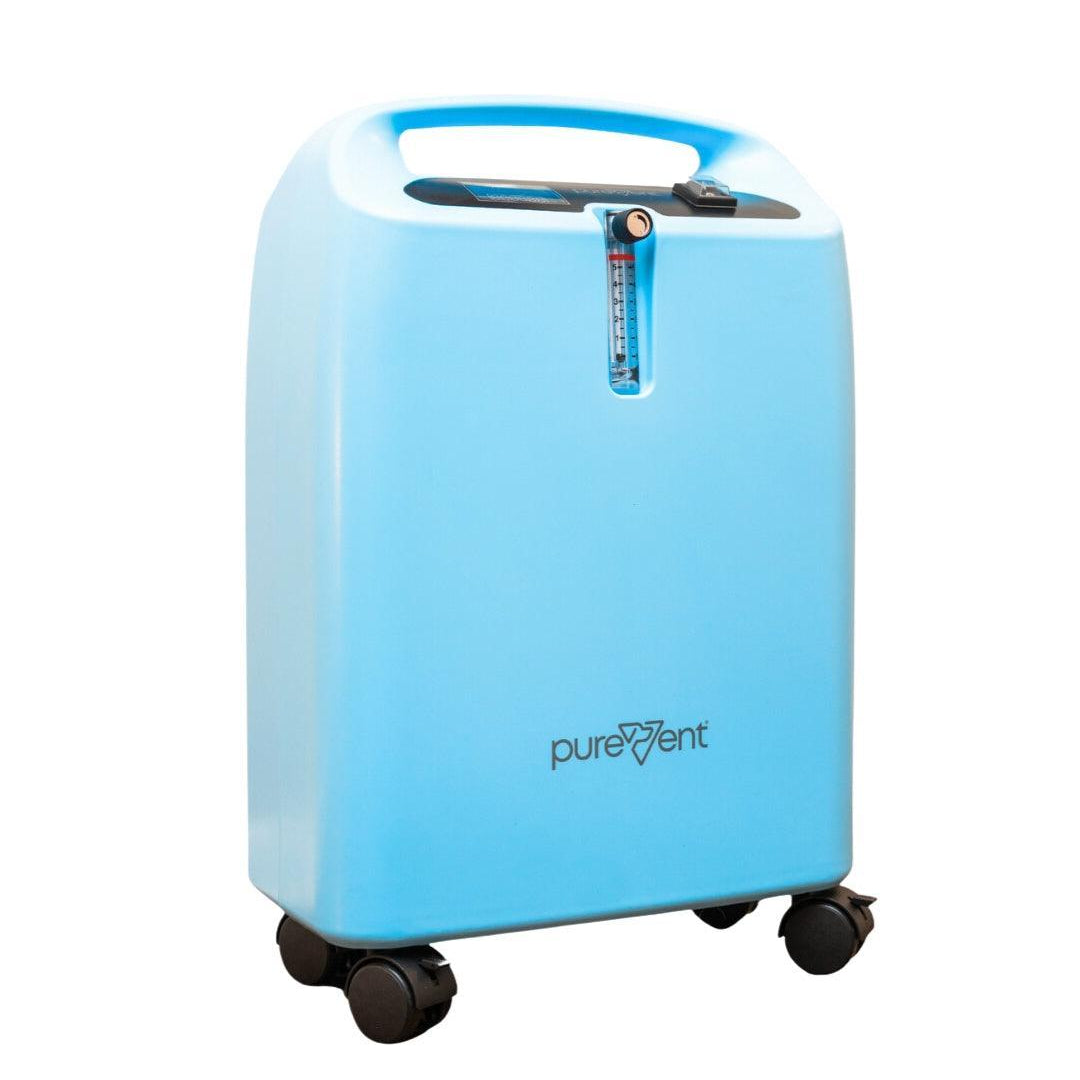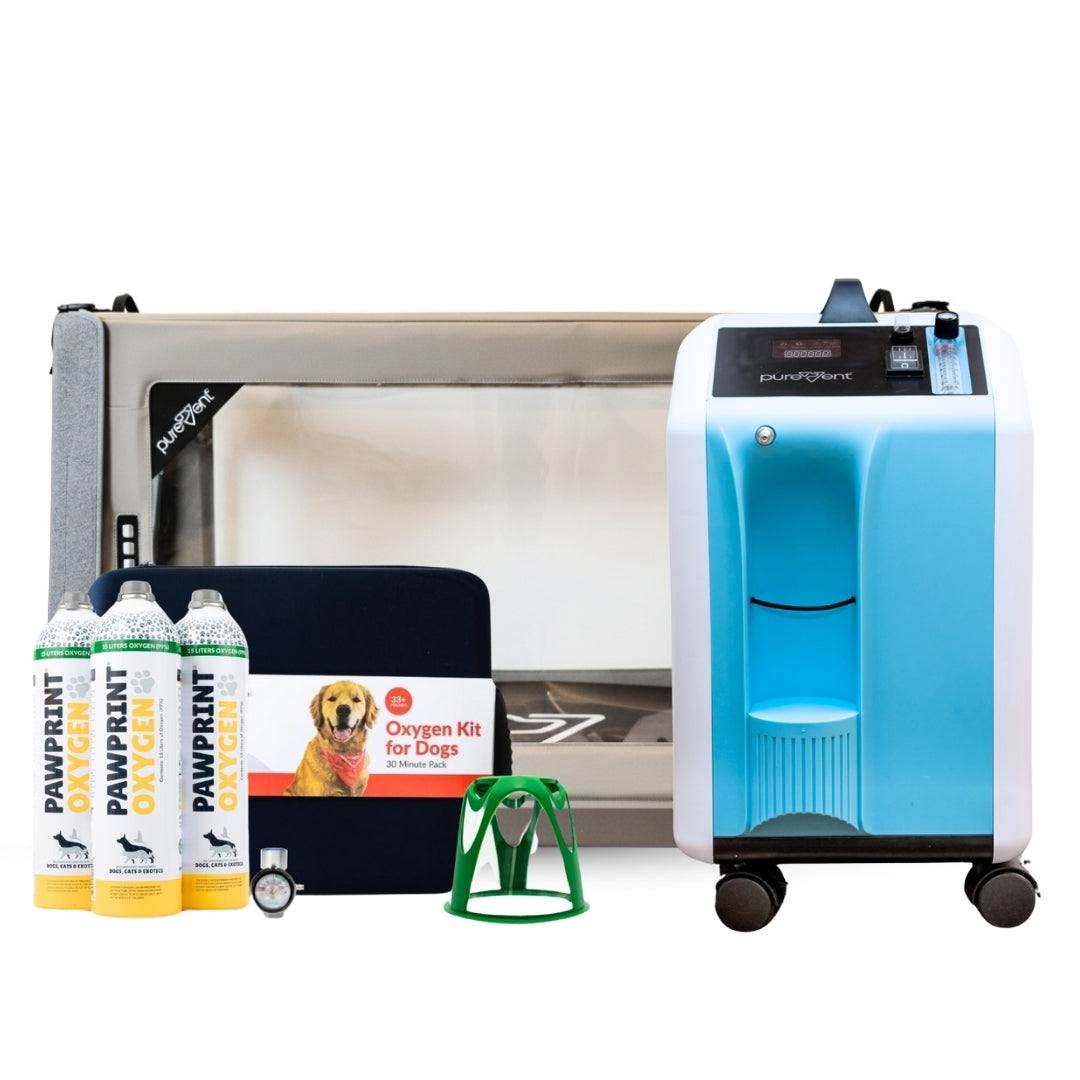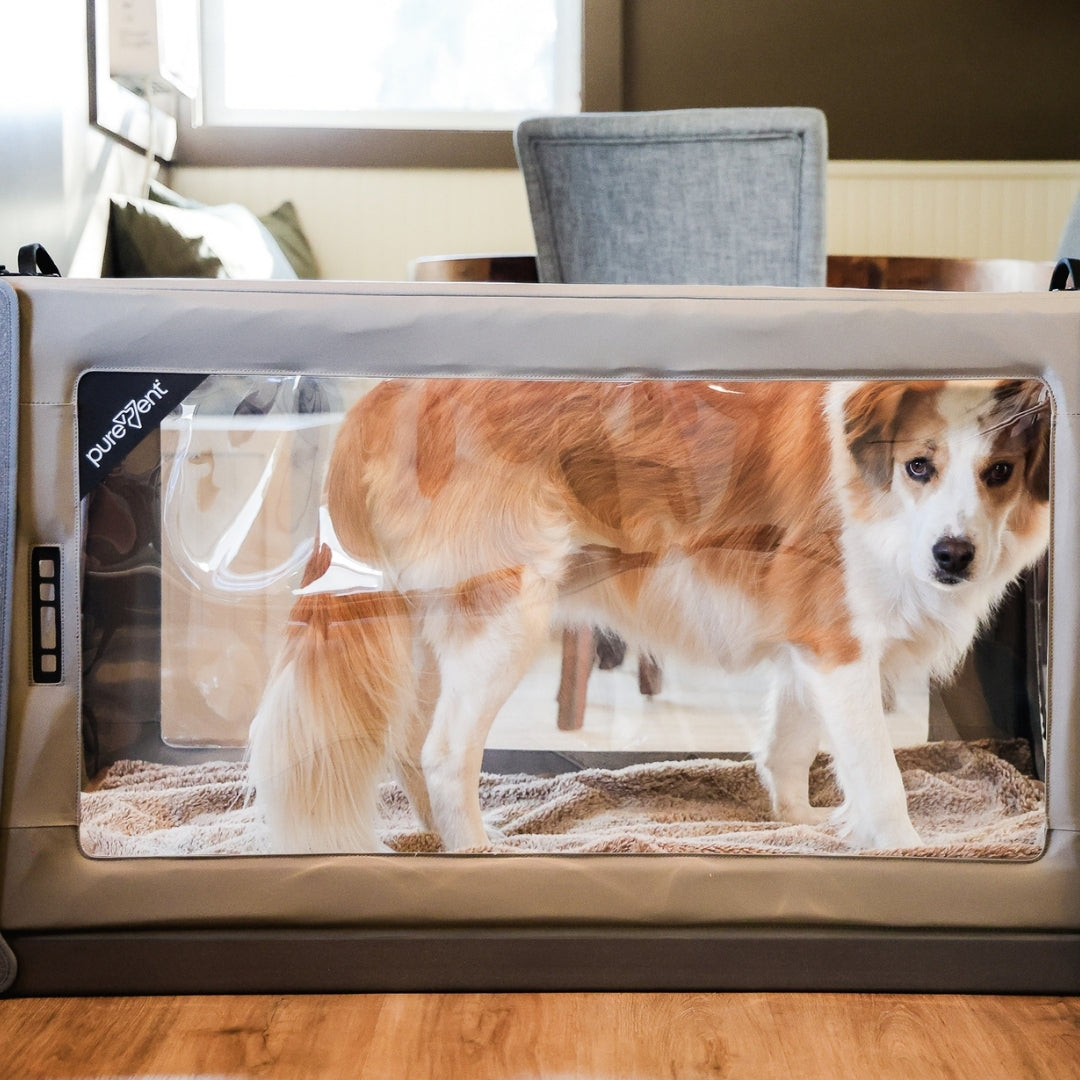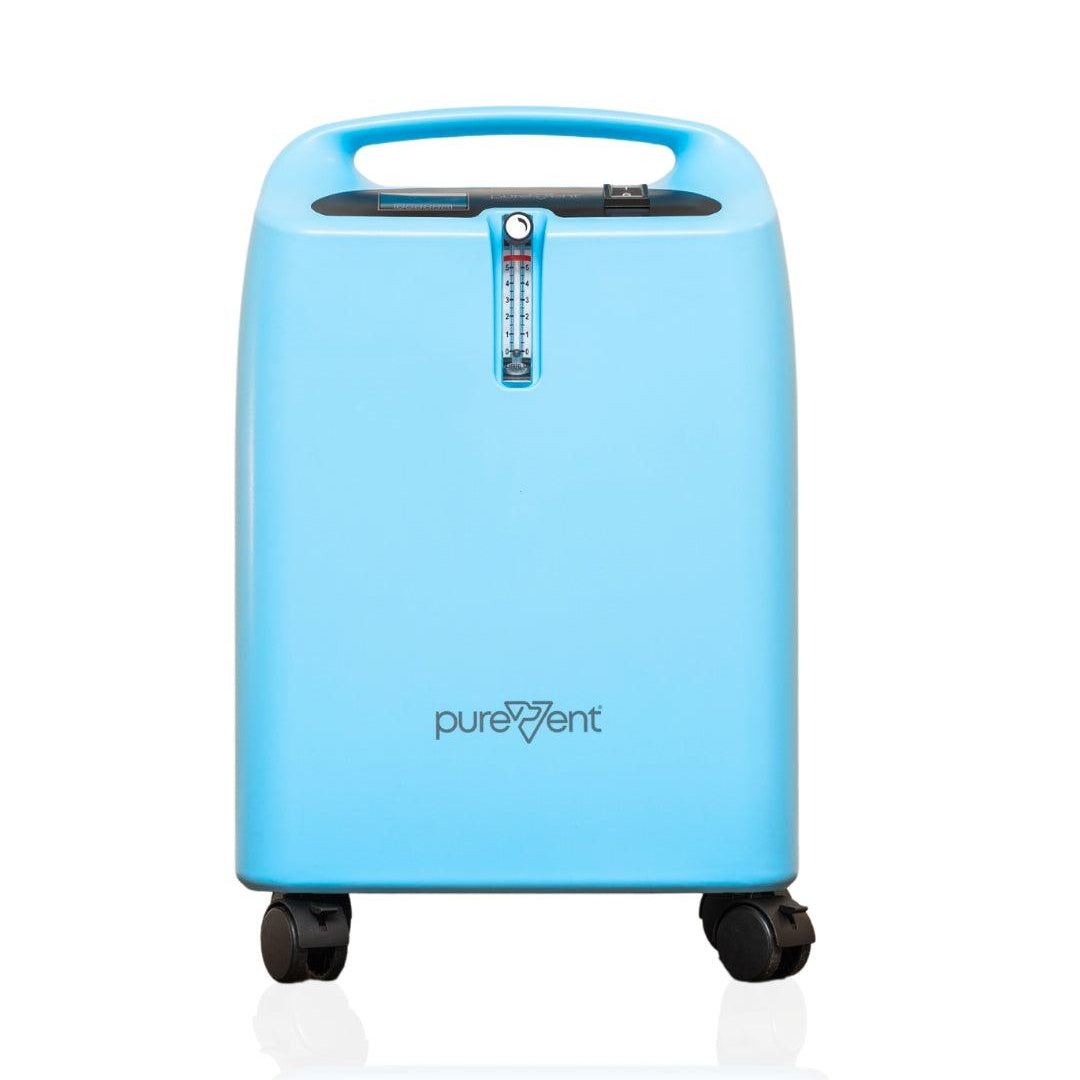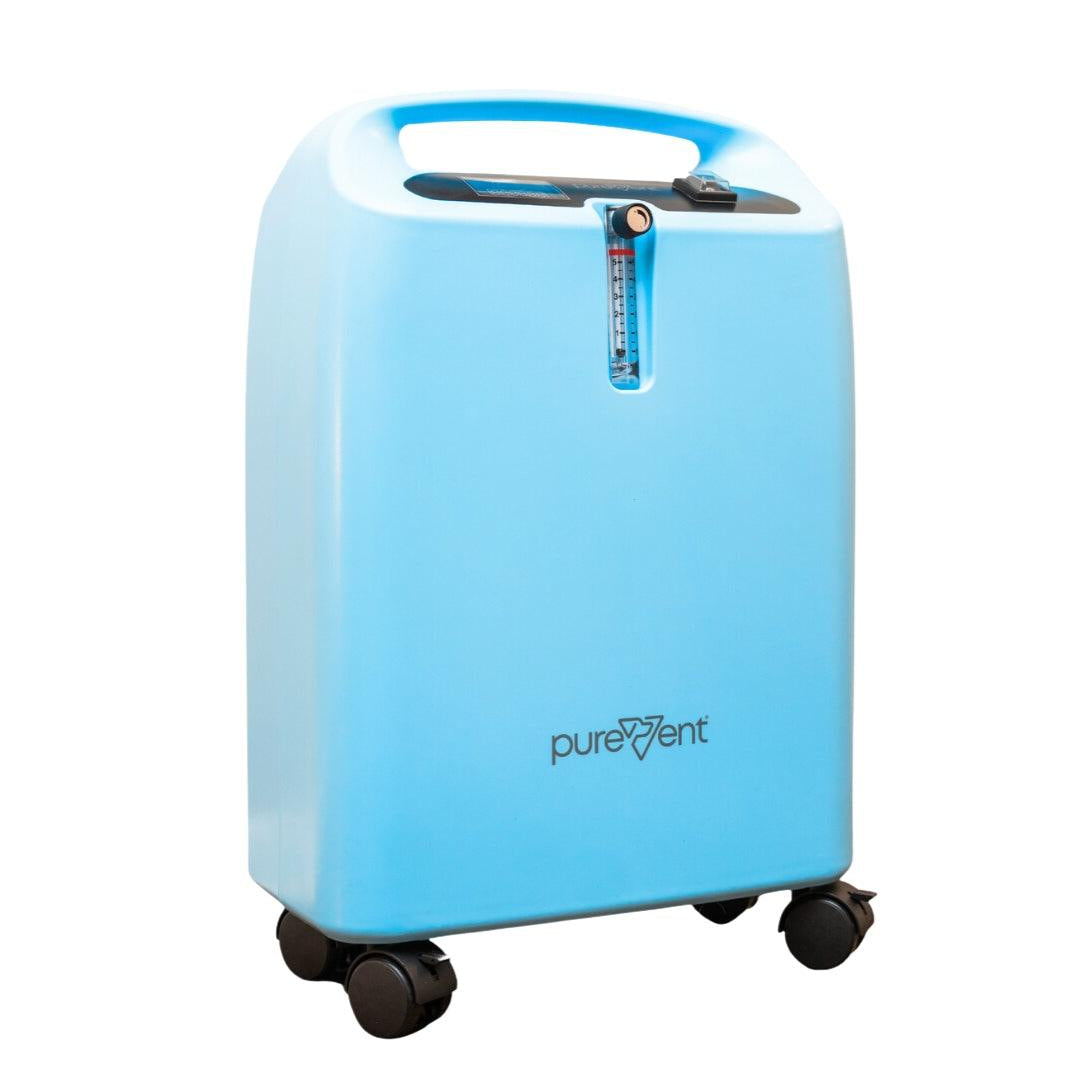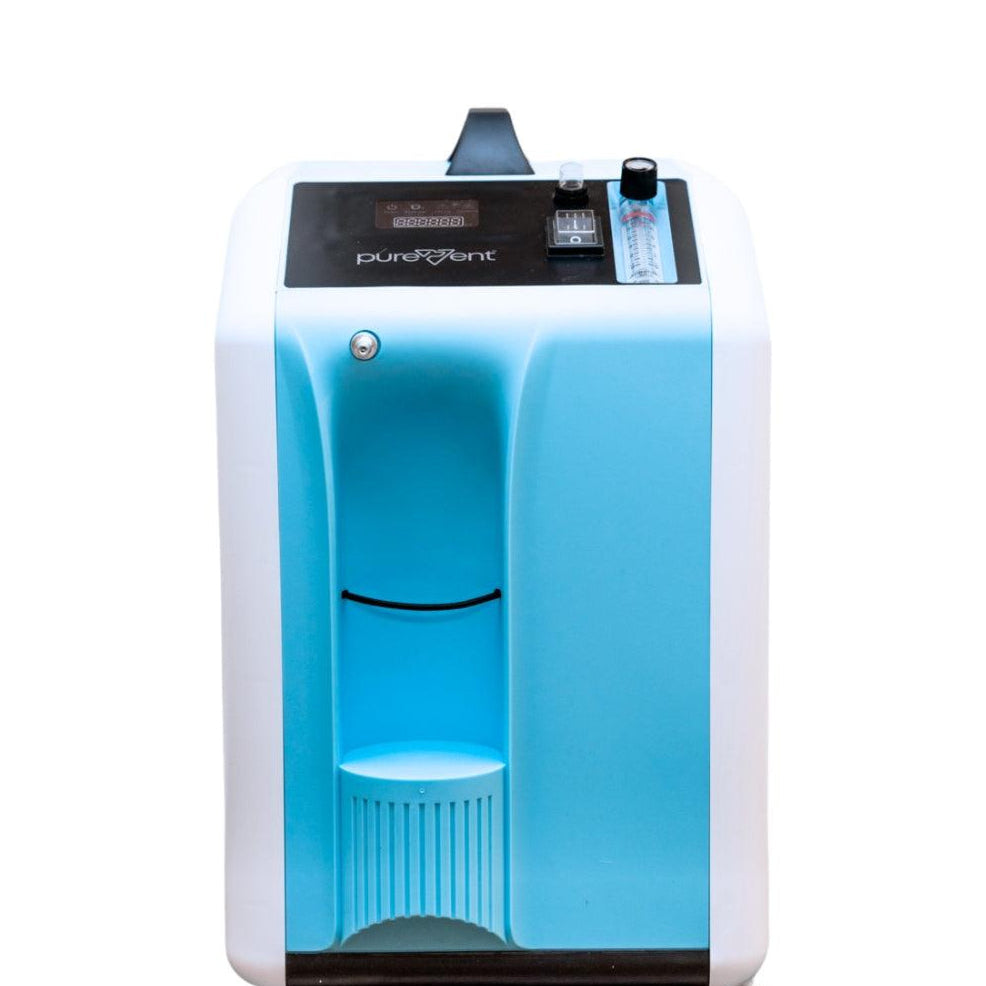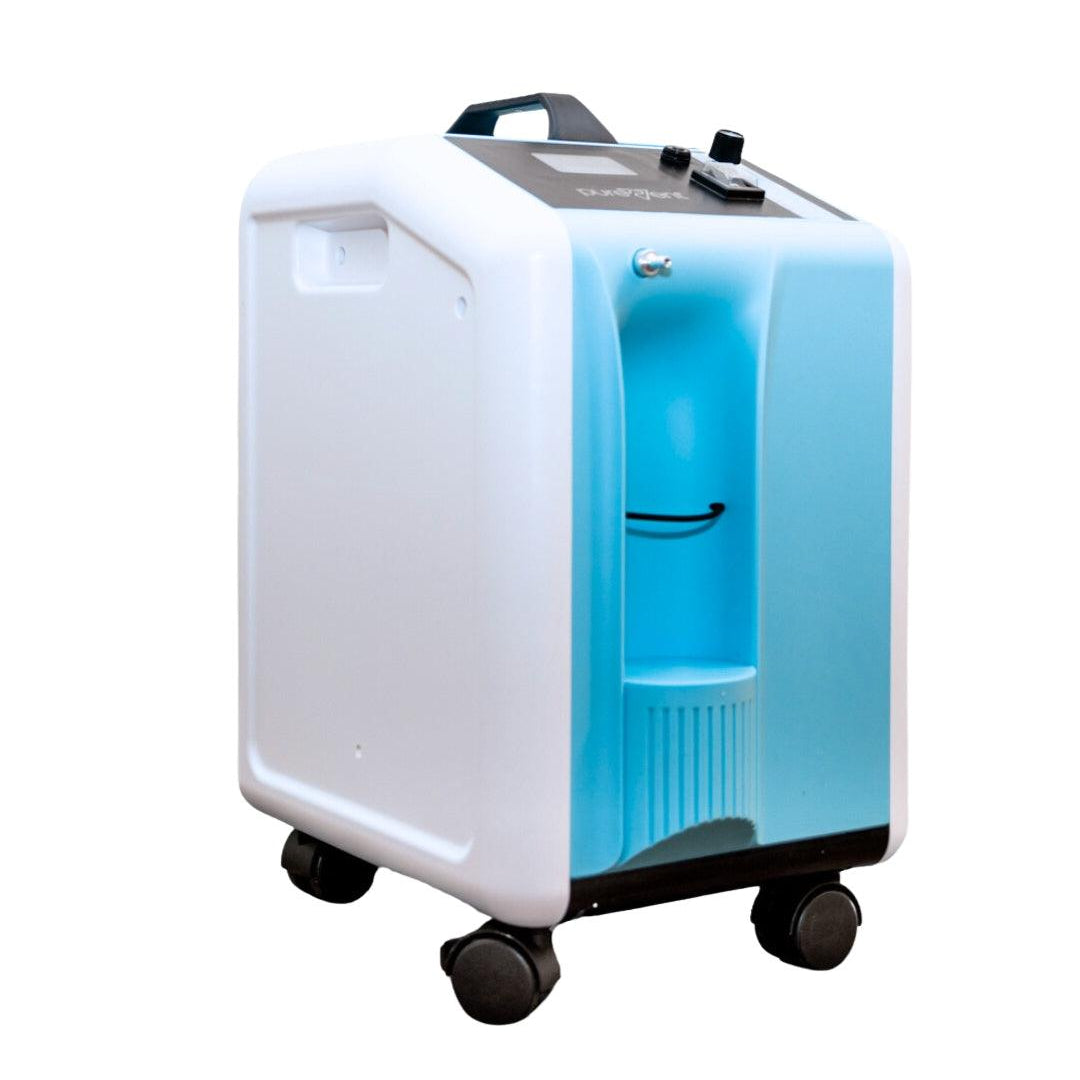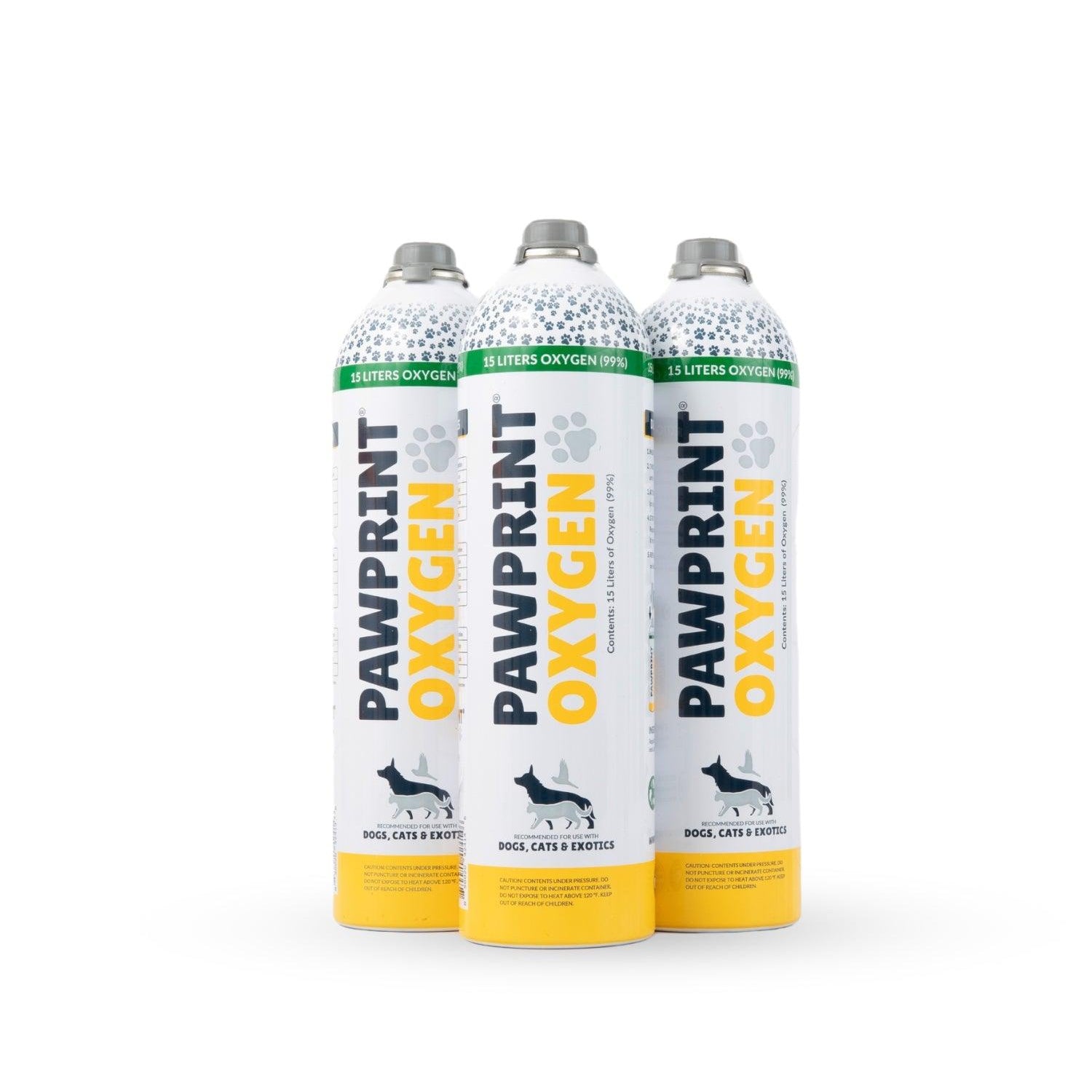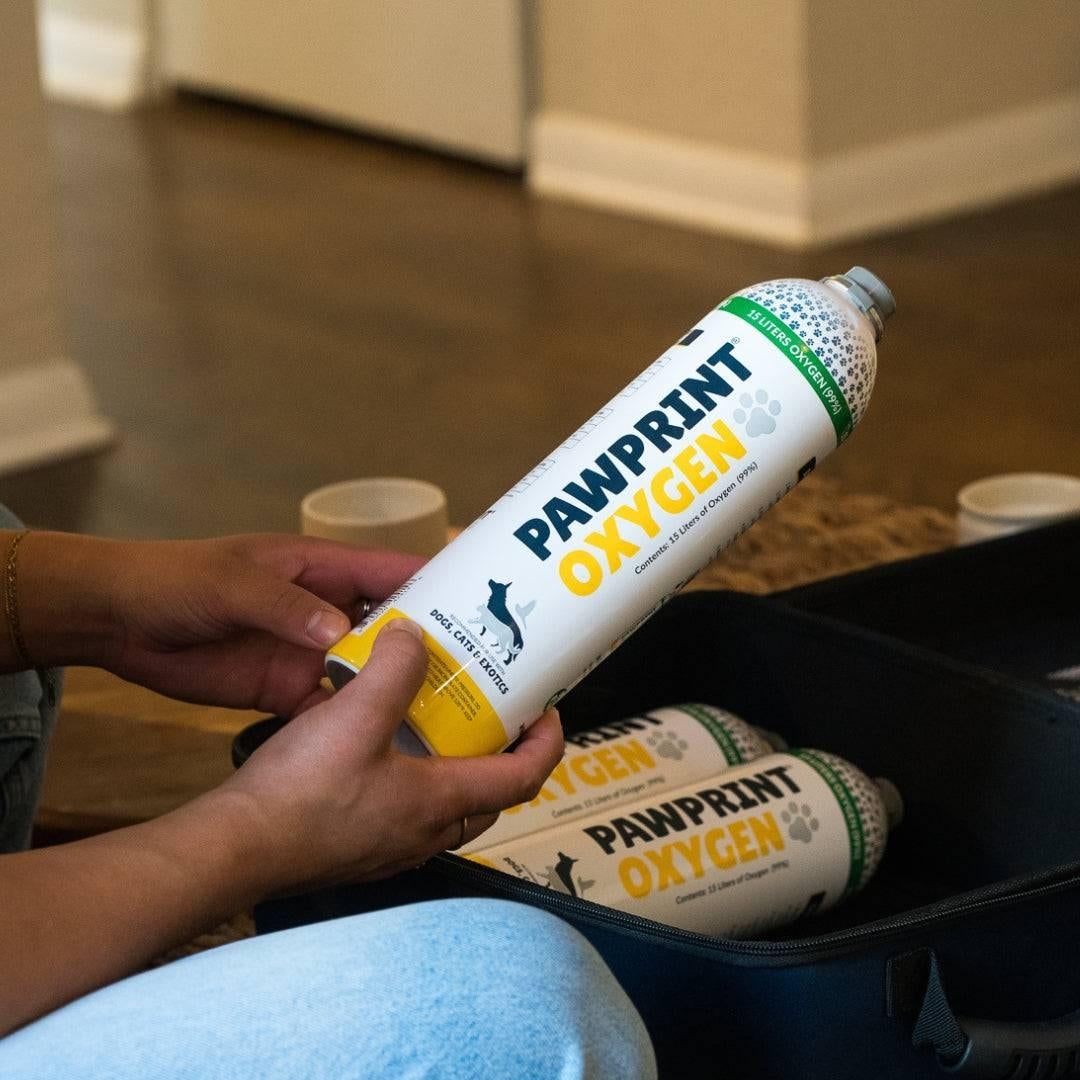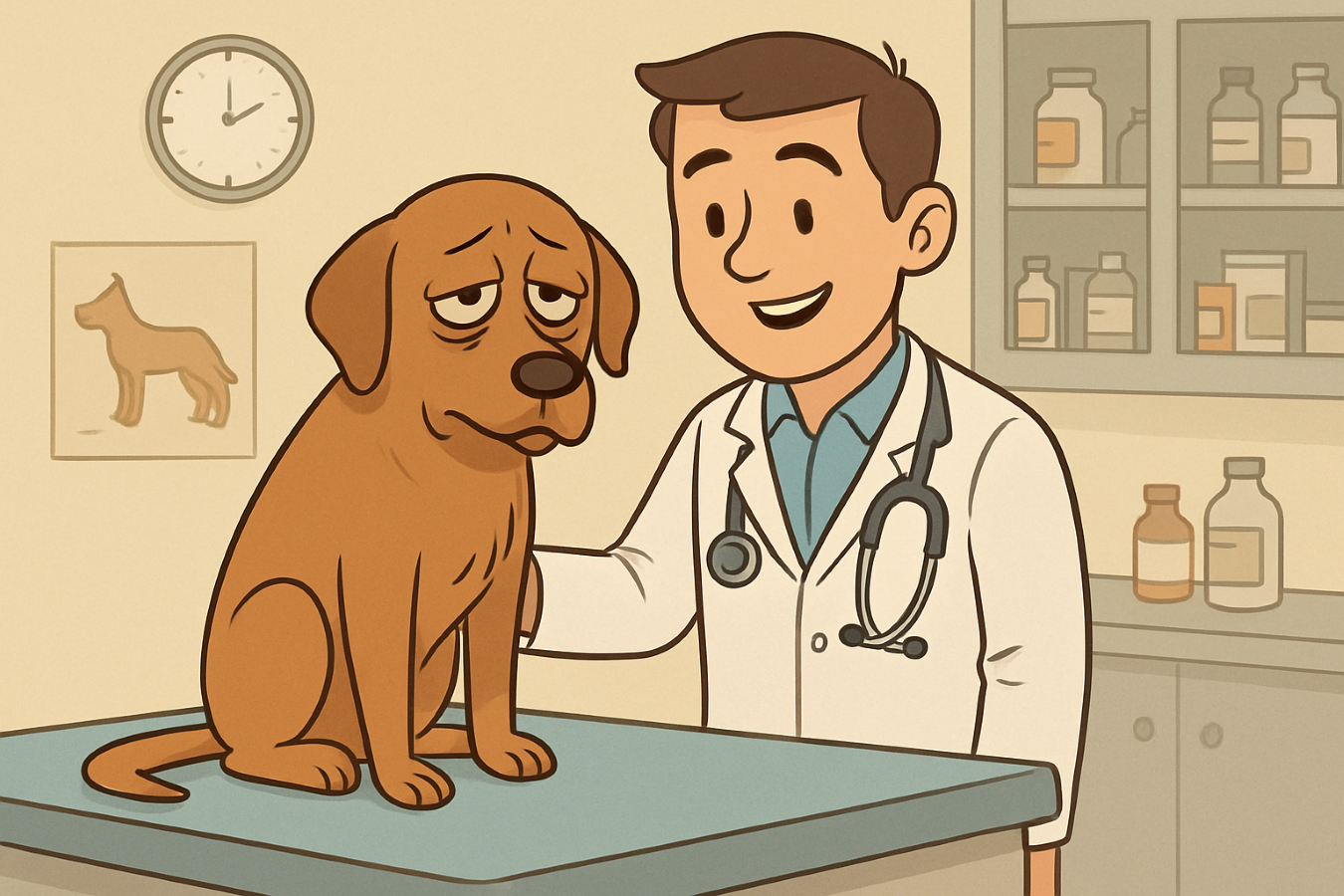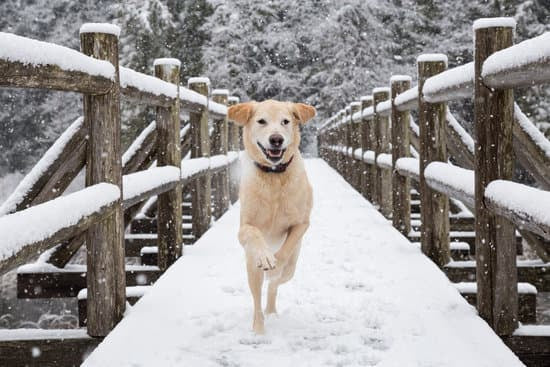Veterinarians Using Oxygen for Transport or Rescue
Pawprint Oxygen has introduced Rescue Oxygen for pets consisting of portable and safe Pawprint Oxygen canisters, a fixed-flow regulator, and a pet oxygen mask.
Originally designed for veterinarians to transport pets requiring oxygen, this system is now affordable and convenient, allowing pet owners to administer oxygen in various situations to aid their pets with respiratory distress.
Rescue oxygen is a standard of care in human medicine. It is used by first responders for pre-hospital care, in ambulances, and in hospitals. However, its availability for pets has been limited. Until recently, there has been reluctance to prescribe high-pressure oxygen tanks, especially for transport, due to safety and liability concerns. Other oxygen sources, such as oxygen concentrators, lack the portability and flow rate requirements for episodic or transport use.
Table of Contents
Can I refill my canister after use?
Oxygen canisters cannot be refilled. Please recycle your empty canisters. You can reorder canisters at any time!
What Is The Shelf Life On The Oxygen Canisters?
We have a two-year shelf life on our Oxygen Canisters. This shelf life is for the seal on the Oxygen Canister itself, not the oxygen.
Store canisters in a cool, dry place and if the seal is not tampered with, the oxygen will stay in the canister.
How long does each oxygen canister last?
Pawprint Oxygen Canisters can last up to 30 minutes. How long the canisters last is dependent on the flow rate that you’re using.
The flow rate is the “dosage” of the oxygen drug and determines the rate at which the oxygen gas leaves the canister.
Your Portable Oxygen Kit will include a regulator that is pre-set to the flow rate dictated by the weight range best for your pet. If you did not purchase a kit, and need a regulator, they can be purchased separately.
These are the durations that the canister will last for each of the flow rates:
0.5 Liters per minute: 30 minutes
1.0 Liters per minute: 15 minutes
2.0 Liters per minute: 7.5 minutes
3.0 Liters per minute: 5 minutes
A New Rescue Oxygen System for Pets
There is now a veterinary rescue oxygen system available for emergency home use, transport, and supplementation of other systems. Pawprint Oxygen presents a Rescue Oxygen System for pets consisting of portable and safe Pawprint Oxygen canisters, a fixed-flow regulator, and a pet oxygen mask. This system is affordable and convenient, enabling veterinarians and pet parents to administer oxygen in a variety of situations.
Rescue oxygen is designed to support patients experiencing respiratory distress at home, during transport, and as a supplement to other oxygen sources in the hospital. Understanding the limitations of rescue oxygen is important for it to be effective.
Rescue pet oxygen requires someone to administer it to the patient. This includes keeping the mask in place (although a nylon oversized muzzle can accomplish this), monitoring the oxygen left in the canister, and changing canisters when the gauge reads empty. The system is designed to be user friendly for both pet parents and veterinarians.
While the rescue oxygen system can be used in the initial emergent treatment of a patient suffering from respiratory distress, there are situations in which longer term oxygen is more suitable. Home oxygen chambers coupled with an oxygen source such as a home oxygen concentrator may be a better fit for pets that require long-term oxygen therapy or higher flow rates than that which can be sustained by the Rescue Oxygen System.
Oxygen administration is already a standard of care in human pre-hospital medicine and other medications for pets, which were previously reserved for hospital use, are now commonly administered at home. The advent of a cost-effective and safe Rescue Oxygen System for pets equips pet parents and veterinarians with the ability to provide medical-grade and comforting oxygen at home, during transport, and where not previously available. This will be the new standard of care for pets.

About Sean Smarick, VMD, DACVECC
Dr. Sean Smarick received his Doctor of Veterinary Medicine from the University of Pennsylvania in 1991. He then completed a residency in Veterinary Small Animal Emergency and Critical Care at the University of California, Davis in 2003 and, in the same year, became a Diplomat of the American College of Veterinary Emergency and Critical Care. In his 30 years of practice, Dr Smarick has enjoyed being in the ICU and emergency rooms of private and university practices, participating in CPR and clinical research, contributing to journals and textbooks, training residents and interns, and serving on the board of several veterinary businesses and organizations. Dr. Smarick currently serves as the Post-Cardiac Arrest Care Domian Chair of RECOVER , as a Trustee on the Board of the PVMA , and as a commissioned Veterinary Corps Officer in the US Army Reserves. In addition to providing local and national instruction to handlers, paramedics and veterinarians, he is involved in pre-hospital veterinary care as a member of the VetCOT ATLS and education committees, the K9 TECC working group , and on the board of NAVEMS.
